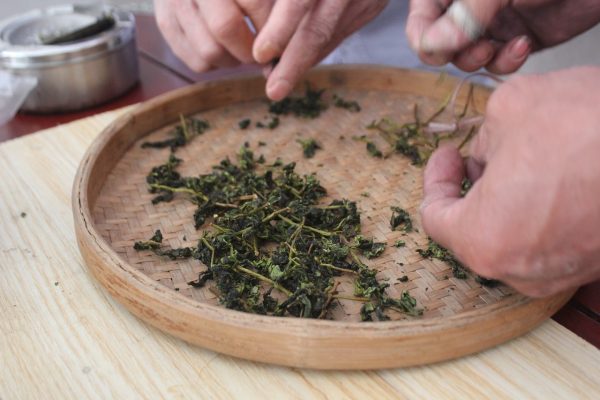Oolong Tea: History, Properties, Contraindications
Oolong tea is a type of tea cultivated for centuries in China, Japan, and India. The leaves of Camellia sinensis are harvested and undergo complex processing designed to break only the edges of the leaves, achieving varying levels of partial oxidation. An “oolong” tea is oxidized between 20% and 80%. As you can imagine, this wide range includes teas with very different tastes and aromas. Thus, the term “oolong tea” refers to a large and noble family of infusions.
History of Oolong Tea
The origin of oolong tea is mysterious. There are no certain sources, but it is generally believed that the first cultivations date back over 400 years in the Fujian region of China. Even the name is debated. Some experts believe “oolong” can be translated as “black dragon,” possibly referring to the dark, curled appearance of the processed leaves. Others attribute the name to a transformation of the discoverer’s name.
Uses of Oolong Tea
For hundreds of years, oolong tea has been cherished for its health and psychophysical well-being effects. Sipping a cup of oolong tea helps combat free radicals and cellular aging. It is also considered a remedy due to its antioxidant properties, beneficial for the skin, teeth, bones, and brain.
Properties of Oolong Tea
The benefits of oolong tea come from the substances it contains. It is rich in minerals such as iron, magnesium, zinc, potassium, sodium, and phosphorus. It also provides vitamins B2 and B9 (folic acid). Its water content makes it an excellent diuretic, while caffeine helps accelerate metabolism. For a deeper understanding of oolong tea characteristics, you can read our dedicated article.
Contraindications of Oolong Tea
Oolong tea is essentially very healthy. However, as with any substance, moderation is key. The caffeine in oolong tea may cause anxiety and agitation in some people.
Can Oolong Tea Be Consumed During Pregnancy?
Oolong tea is not prohibited during pregnancy or breastfeeding, but intake should be limited to no more than 2 cups per day.
Varieties of Oolong Tea
As mentioned, “oolong tea” encompasses a wide range of tastes and aromas. In our shop, you can find the best varieties and enjoy them in the Chinese traditional way. Among the types available are:
-
Da Hong Pao Oolong Tea
One of the most prized oolong varieties, produced on the Wu Yi Mountains in Fujian. Its aroma is irresistible, with notes of orchid and other floral scents. Legend says this tea cured an ancient emperor of a terrible illness. The emperor is said to have spread his cloak over the bushes, giving the tea its name “Da Hong Pao,” meaning “Great Scarlet Robe.” The original bushes are now protected as a national treasure. -
Tiè Guan Yin Oolong Tea
This tea has a low oxidation level, making it more similar to green tea than other oolongs but with more pronounced and aromatic floral notes. This characteristic has made it one of the most used teas for the Gong Fu Cha, the ancient Chinese tea ceremony.

